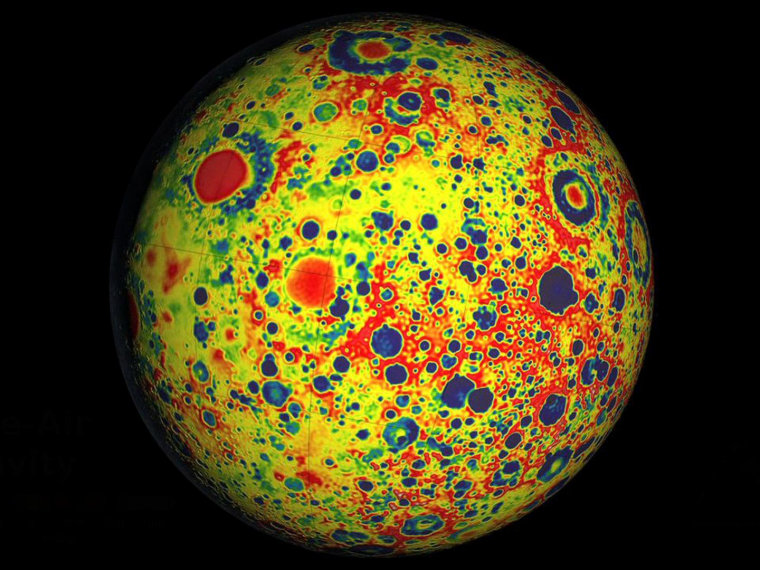You may think the greatest satellite data of the week is the updated mosaic of Earth at night (included below). You are entitled to that opinion. In my mind, however, it's the gravity map of the Moon produced by NASA's twin GRAIL spacecraft. GRAIL-A and GRAIL-B, casually known as Ebb and Flow, have been orbiting the Moon since the start of the year. Their mission: to make a high resolution map of the Moon's gravitational field. From this, scientists can infer information about the Moon's interior and its thermal history
Not only is the resulting data sexy, so is the science of how they do it. The two spacecraft are in identical orbits around the Moon, orbits which are altered ever so slightly by surface (or interior) features where there is more or less mass. More mass and the spacecraft will be pulled closer to the Moon, less mass and they will move farther away. These changes are so slight that they are almost impossible to measure; that's where the dual spacecraft come in. Each can measure the precise distance it is from the other, isolate the changes due to gravity, and VOILA - gravity map!
To see the map in all its lunar glory and side-by-side with an elevation map of the Moon, click here.
Here's that other sexy dataset of the Earth at night from NASA's Suomi National Polar-orbiting Partnership. One of the most stunning aspects, in my opinion, is the contrast of the eastern and western U.S.
More science for your weekend:
Several caterpillar species discovered to shoot their excrement large distances at high speeds to avoid predation. Gives new meaning to the phrase...
Researchers date stalagmite in Oregon cave to 13,000 years ago allowing them to infer how the climate varied in the Pacific Northwest.
A new study shows the Grand Canyon may predate the extinction of the dinosaurs, and be ten times older than originally thought.
And speaking of dinosaurs, fossilized bone found languishing in London museum collection may be from the earliest dinosaur yet.
How do porcupines mate? Very carefully and within an 8 - 12 hour window.
Antarctic fur seal tries to mate with a king penguin. Outcome not so great.
To wrap up this week's sexy science, check out this web series on the science of sex in the animal kingdom. You'll never be so happy to be a boring human in your life once you see what some of these animals must go through. Needless to say, it's educational, entertaining, and often NSFW.
Hope that tides you over till next week! @Summer_Ash
